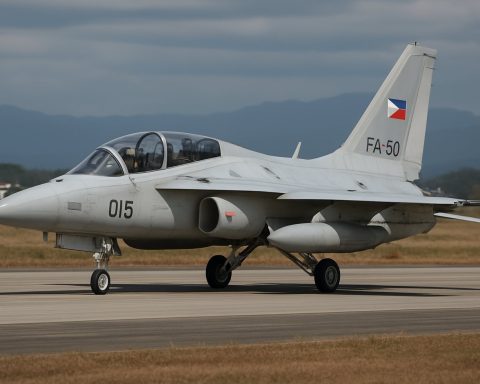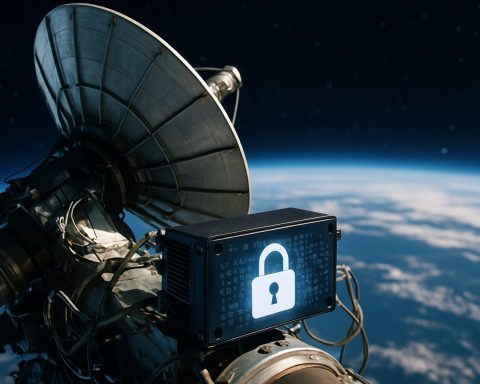- The Soyuz MS-27 blasted off from the Baikonur Cosmodrome, marking a significant space exploration milestone.
- NASA astronaut Jonny Kim and Roscosmos cosmonauts Sergey Ryzhikov and Alexey Zubritsky embarked on this mission, showcasing international collaboration.
- The spacecraft achieved precise orbit insertion and executed a flawless docking with the International Space Station (ISS).
- The mission is particularly important as it is Kim’s and Zubritsky’s first spaceflight and Ryzhikov’s third.
- During an eight-month stay on the ISS, the crew will conduct experiments in microgravity science, biology, astronomy, and physics.
- This mission highlights the enduring quest for discovery and understanding, essential to humanity’s exploration of the cosmos.
On a quiet morning at the Baikonur Cosmodrome, the sky ignited with a surge of flame and ambition as the Soyuz MS-27 spacecraft soared into the cosmos. With the vastness of space beckoning, three intrepid travelers embarked on a journey that captures the essence of human curiosity and the enduring quest to explore the unknown.
The spacecraft rocketed into orbit at precisely 1:47 a.m. EDT, cutting through the early dawn with a precision only decades of space exploration can achieve. Aboard, NASA astronaut Jonny Kim, alongside seasoned Roscosmos cosmonauts Sergey Ryzhikov and Alexey Zubritsky, settled into their seats with a shared sense of mission and camaraderie. Each astronaut brought distinct experiences and expertise, poised to contribute to the ongoing story of exploration.
The voyage itself was a masterclass in engineering finesse, as the Soyuz executed a flawless two-orbit, three-hour journey to the International Space Station (ISS). Earth’s azure curve was their backdrop, a reminder of humanity’s small but significant presence in the vast universe. As the spacecraft neared its destination, it initiated an automatic docking with the Prichal module, a high-tech symphony of metal and circuitry.
As the new residents of the ISS, Kim, Ryzhikov, and Zubritsky are about to immerse themselves in the complex ballet of microgravity science and technological innovation. Their time aboard symbolizes not just a physical journey, but a testament to international collaboration in the realm beyond our planet. Working in unison, these explorers will undertake experiments that promise to deepen our understanding of biology, astronomy, and physics, nurturing the seeds of knowledge that may one day return benefits to life on Earth.
This mission is particularly significant for Kim and Zubritsky, both on their inaugural spaceflight, representing the new wave of scientists and explorers who will lead us further into the stellar wilderness. For Ryzhikov, embarking on his third voyage, it’s another chapter in a distinguished career among the stars, underscoring a lifetime dedication to space exploration.
Space missions are not isolated endeavors but parts of a greater narrative, weaving together the ambitions and dreams of the world’s space agencies. With the spectacular launch of the Soyuz MS-27, humanity strides once more into the celestial unknown, driven by a universal desire to explore, discover, and understand.
As this trio of spacefarers begins their eight-month stay aboard the ISS, they do so with the knowledge that what they achieve may one day transform life on Earth. They remind us that the call to explore is an indelible part of our nature, urging us to reach beyond the skies. Here’s to the adventurers who dare to step beyond the boundary of the familiar, inspiring us all to look upward and envision what lies ahead.
Unveiling the Cosmic Journey: Secrets of the Soyuz MS-27 Mission
Introduction
The silent roar of the Soyuz MS-27 spacecraft lifting off from Baikonur Cosmodrome is more than just a testament to human ingenuity. It is a convergence of scientific prowess, international collaboration, and the shared human obsession with the cosmos. As NASA astronaut Jonny Kim and Roscosmos cosmonauts Sergey Ryzhikov and Alexey Zubritsky embark on their celestial journey, we take a deeper dive into the facets of their voyage that may transform our understanding of space and benefit life on Earth.
Real-World Use Cases: Why This Mission Matters
1. Microgravity Science: Experiments conducted in the microgravity environment of the ISS can reveal previously misunderstood biological processes, aiding medical advancements on Earth.
2. International Collaboration: This mission underscores the power of collaborative international ventures, highlighting how pooling resources and intellect accelerates space research.
3. Technological Innovation: The Soyuz MS-27’s flawless dock with the ISS showcases advancements in automated docking technologies, which are critical for future long-duration missions.
Features, Specs & Pricing: Inside the Soyuz MS-27
– Design: The Soyuz spacecraft is celebrated for its robustness and versatility, having been unchanged in fundamental design for decades. This reliability is why it remains a cornerstone of crewed spaceflight.
– Cost: The Soyuz system is relatively cost-efficient compared to other spacecraft, valued for its simplicity and cost-effective design—a key reason for its continued use in international space missions.
Pros & Cons Overview
Pros:
– Reliability: Decades of operational experience make the Soyuz spacecraft incredibly reliable.
– Cost-Effective: Compared to newer spacecraft like SpaceX’s Dragon, Soyuz offers a budget-friendly option for manned missions.
– Efficient Design: Its compact design allows for efficient transportation and docking.
Cons:
– Size Constraints: The compact design, while efficient, limits onboard space for crew and cargo.
– Dependency on Russia: Current geopolitical tensions may strain international collaborations involving Soyuz missions.
Insights & Predictions: Future of Space Exploration
With new players like SpaceX and Blue Origin entering the scene, traditional workhorses like the Soyuz continue to prove their worth. However, advancements in reusable rocket technology are likely to redefine the economics of space travel. There is a growing trend towards international cooperation, with lunar and Mars missions on the horizon, reflecting a global effort to explore deeper into space.
Tutorials & Compatibility: How to Prepare for a Space Mission
1. Physical Training: Rigorous physical fitness regimes ensure astronauts are in peak condition to handle the stresses of space travel.
2. Technical Training: Understanding spacecraft systems, emergency procedures, and experiment protocols is crucial.
3. Cultural and Language Training: Effective communication in a multicultural setting like the ISS requires cultural sensitivity and language proficiency.
Actionable Recommendations for Aspiring Astronauts
– STEM Education: Focus on achieving proficiency in science, technology, engineering, and mathematics.
– Clear Understanding of Space Policy: Awareness of international space policy and collaboration guidelines is essential.
– Physical Fitness: Keep a high standard of physical fitness; consider enrolling in physical readiness programs like those offered by NASA.
Conclusion
The Soyuz MS-27 mission offers a riveting glimpse into the future of space exploration, where human tenacity and international unity propel us toward new discoveries. Whether you’re intrigued by the science, the technology, or the collaborative aspects of this mission, it’s clear that space travel remains an inspiring frontier.
For more insights into space exploration, visit NASA’s official site NASA.











